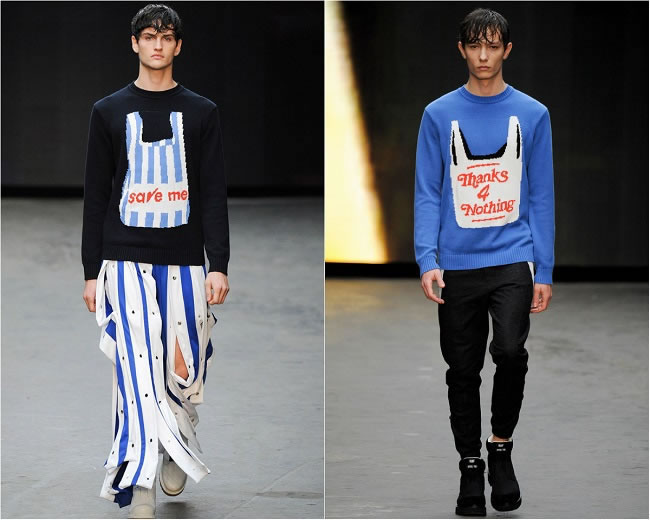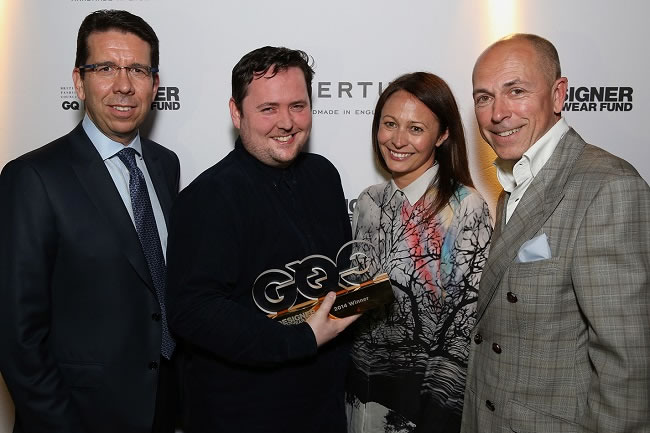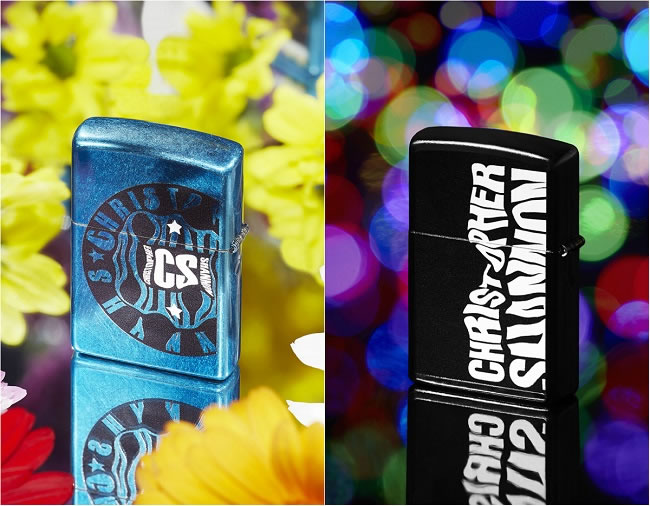1
HOME > Interviews >
IN CONVERSATION WITH... CHRISTOPHER SHANNON
SHANNON ON HIS INFLUENCES, RECENT COLLABORATION WITH ZIPPO, AW15 COLLECTION AND WHY THE CARRIER BAG WAS SUDDENLY A STATEMENT PIECE
Written by Andree Latibeaudiere in Interviews on the 5th October 2015

For one of the stand-out collections from London Collections: Men AW15, Christopher Shannon seemed to have translated the mood of a disenfranchised generation into a witty and wearable collection, with a serious underlying message. The simple, yet bold slogans and literal carrier bags as accessories were a real commentary on the socio-economic situation that continues to be a reality for some. In Shannon's hands, the collection was delivered with a bit of cheek and a light-heartedness that came off as self-deprecating, rather than sardonic.
For this collection, Shannon collaborated with Zippo, an iconic American brand in its own right with a long history of creating covetable lighters and collectors pieces, which appeal to the same demographic that Shannon's work seems so in tune with. Ahead of his upcoming AW15 launch, MenswearStyle sat down with the designer to speak about his influences from the AW15 collection and why the carrier bag was suddenly a statement piece.

Congratulations on the launch of your AW15 collection. When it hit the runway in January, it was one of the most talked about collections, owing mostly to the carrier bag accessories and bold slogans. Why did you think that that was the time to make such a statement?
“I think I was feeling some pressure after winning the GQ Menswear Award, it was the first one and suddenly the focus on me seemed to be more serious, yet I didn’t want to change the way I work. Also so many designers I know were going out of business, really talented people, I suppose my mood was quite reactionary. It takes so much to build a new label, so many things go wrong and I think people don’t really realise that.”
What was the starting point for this collection? Was it a mood, a particular garment or another outside factor?
“It was plastic bags, I kept noticing they were in my research. I’m always drawn to quite crude references and items, I never see the value in doing obvious luxury or just copying designer labels. The plastic bag seemed like the right mascot for the time, I didn’t want to suddenly start making leather bags, it seems so predictable. Disposable culture is so foul, I always want my pieces to feel collectable, something quite singular. I’d also come out of a long relationship and other stuff in my life, I didn’t realise until later how much of that was going into the work.”

Season after season, your collections seem to speak directly to the disaffected youth. What is it about this demographic that resonates with you and why do you feel they need a voice in menswear?
“I’m not sure I try and speak to anyone directly, it’s maybe more that there’s a lot of content in that period of your life that is handy for drawing on. I don’t really think about people’s interpretations of the work, I just work in the moment. If people want to use the garments to express something then that's fine with me.”
The scrapbook feel of your collections is recurring theme; is this a personal influence or an observatory one?
“I think probably both. I’ve always collected imagery since I was really young, I started buying photography books in my early teens, I wasn’t really aware that I was doing it I just always really liked getting lost in images. I was always reading CD booklets and album covers, devouring any magazines that took you out of the drudgery of school and the awfulness of being a teenager.”

How did the collaboration with Zippo come about, as it is an iconic brand in its own right? Did you feel like their brand values complemented yours?
“I had the idea of using the lighter as a graphic in the collection, it seemed really fitting with all the party imagery I was looking at. It seemed like the right vehicle for the tone of the collection. So we worked on a few elements of the show together then decided to start work on a range of lighters.”
How did the collaboration inform this collection?
“It’s more of a back and forth. Looking at ways to incorporate the lighter as an accessory and sort of memento of nights out, so we have them on the knits and also made into sort of pendents for around the neck to compliment the Judy Blame accessories.”
What was your favourite piece to design and why?
“I always like working on knitwear, it’s quite new to me so I work quite loosely with it and see how it goes. Also the last few looks with the deconstructed jackets, just cutting away and revealing the body, feels quite fresh rather than just piling more clothes on. I like to work all around the body which you only really see at the show, so many collections are just designed for catwalk images online.”
Trending
2
3
4
5
6
7
8
9
10









